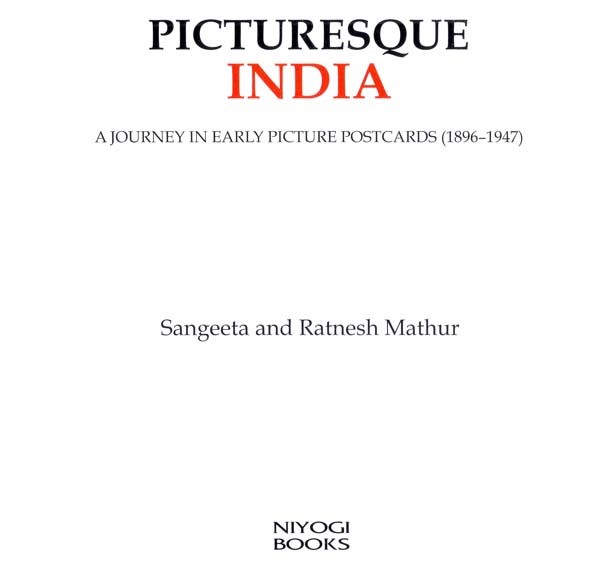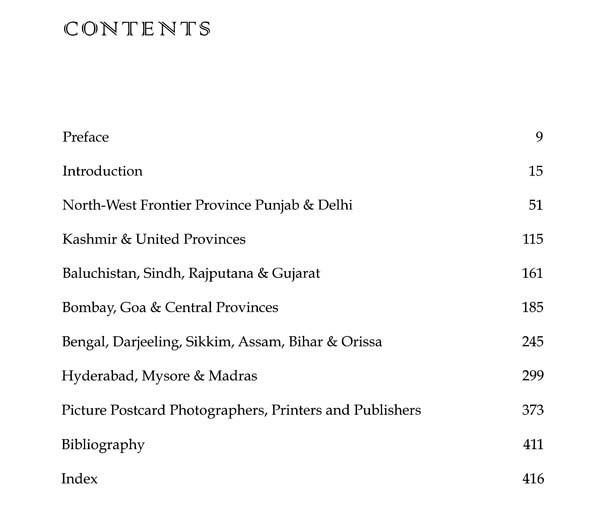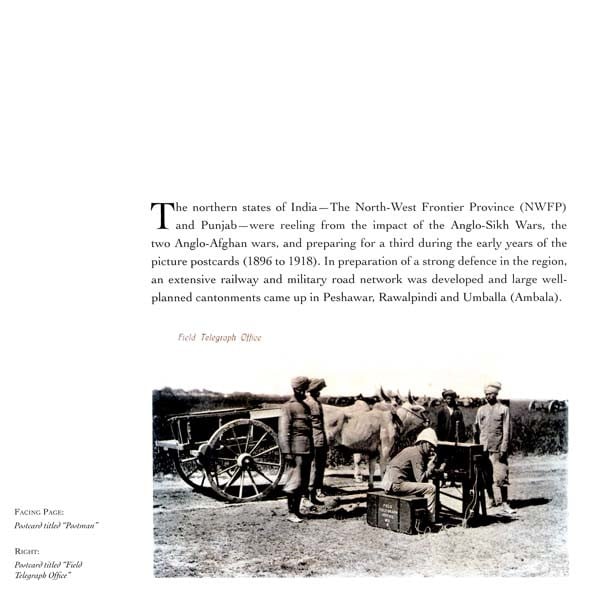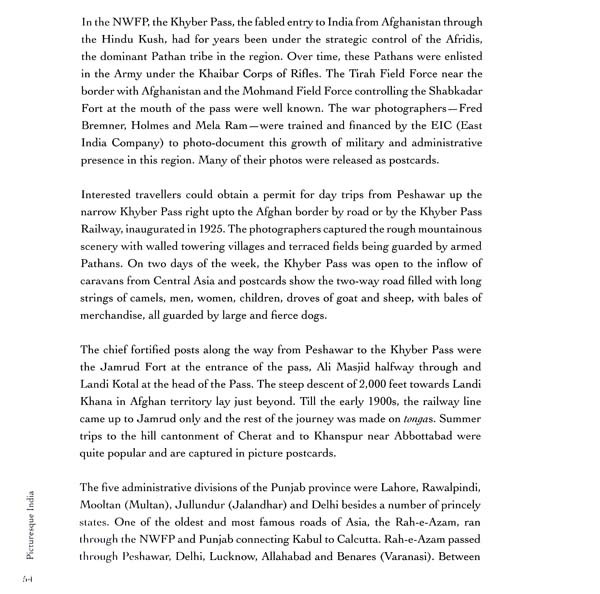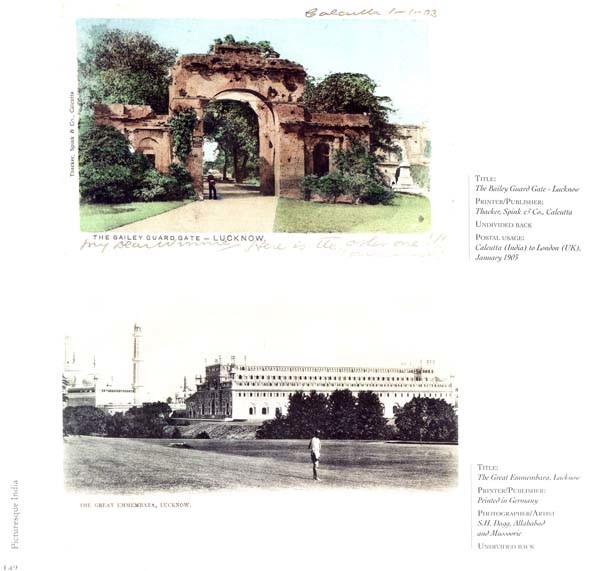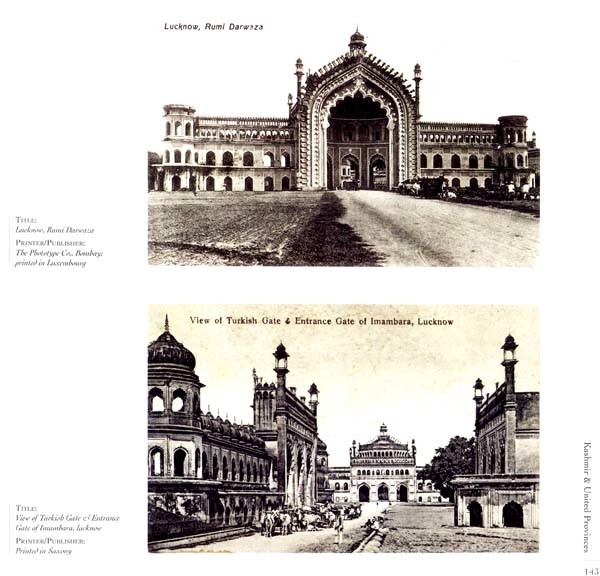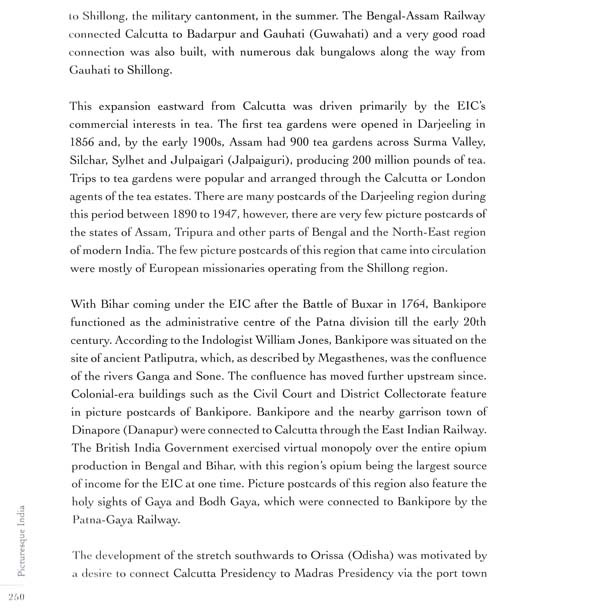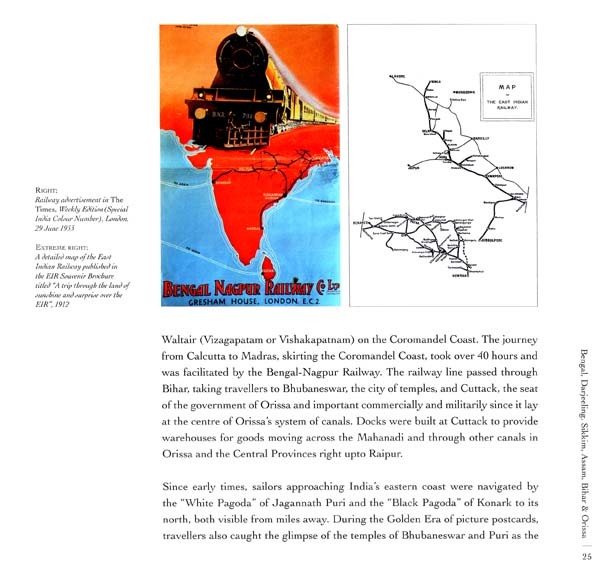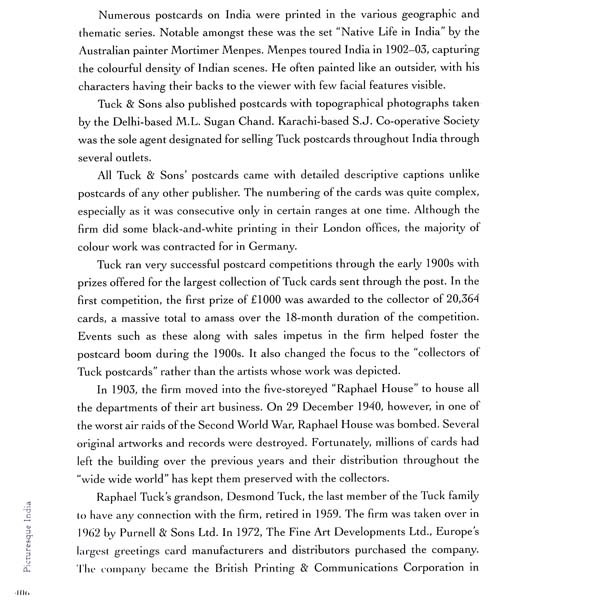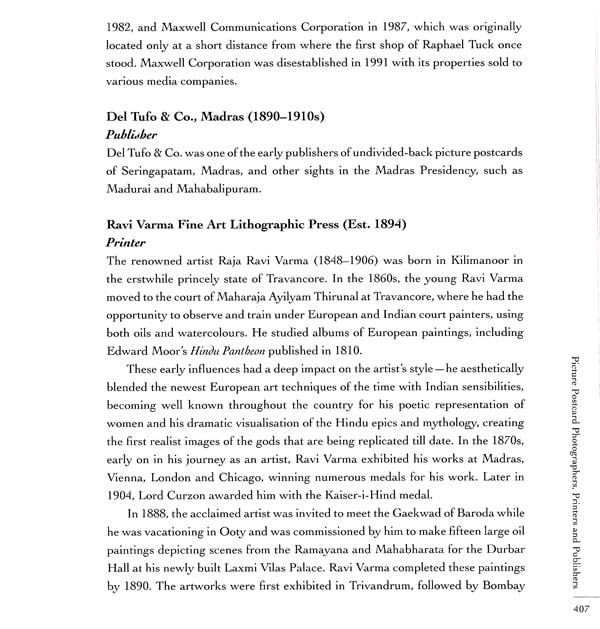About the Book With the dawn of the twentieth century, at the height of the British Empire, came significant changes in the landscape of India-formation of new capital cities in the plains and summer retreats in the hills, evolution of towns or nagores and pores, growth of cantonment towns with their military and civil lines, development of ports or pattanams and creation of cultural, educational and trading centres, all increasingly well connected by an extensive rail, road and, later on, air network. The 550 postcards featured in this book visually document this growth, while also capturing evidences of earlier times in India's fascinating polytemporal towns. The postcards are divided across six chapters representing six regions within India and Pakistan, as they were a hundred years ago. Through these picture postcards and the supporting text, readers can vividly imagine what it would have been like to travel by road or rail across India during the period 1896-1947. An attractive and nostalgic record of the topography of the time, these picture postcards are an untapped resource for those interested in the evolution of cities, town planning, architecture, ethnography, sociology or, simply, travel. For deltiologists, information on the picture postcard type, the publisher, photographer or artist and details of the journey that the picture postcard took halfway across the globe would be particularly interesting.
Brief notes on India's leading picture postcard publishing studios and their photographers, who captured more than just e picturesque in this large and diverse land, vert been put together at the end of the book a small tribute.
About the Author Sangeeta and Ratnesh Mathur have lived and worked in many cities in Asia and Europe. They began building a personal collection of Indian comics, books, maps, stamps, travel and film posters, music CDs and international film DVDs in the initial years of their travels. In 2003 they relocated to the Czech Republic, and after a couple of years of visiting central Europe's museums and antique shops, and regularly attending hobby club meetings, they began expanding their collection with the specific aim of creating a museum back in India. They added Indian picture postcards, lithographs, antiques in glass and porcelain, coins, princely state insignia and weapons, early travel guides and travelogues and so on, to their growing collections. In this Endeavour, their focus, however, remained on the visual history of India and its towns.
Sangeeta and Ratnesh now live in New Delhi, and have been working on setting up the museum for the past couple of years. In the meanwhile, they have begun a digital museum by crating picture-centric stories of Indian towns in local languages.
Preface For centuries. India, the land of fables, has been imagined by people from far-off lands Greek geographers and explorers had begun writing about India around 500 BCE. From the Hellenic Greek period, references to India are to be found in at least seven books, such as Megasthenes's Indica written around 320 BCE and Strabo's Geographica compiled over many years beginning 65 BCE. Later, Ptolemy. in his 2nd CE work Geographia, describes India as the fabled land. farthest away from Europe. The entire geography beyond Pars (Persia) and below Tartaria and Chin (China) was labeled "India". In all likelihood, the name India itself emerges from these descriptions of Greek and Persian travelers, explorers and traders. who had experienced the land beyond the Indus, known as Sindhu in ancient Indian lore.
By the 15th century, as the European race for the sea route to India began, the European imagination of India turned into an obsession. India, or its variants in different European tongues-Index/Indies/Indika, was best captured in the shapes and undaries of the earliest maps made by their cartographers. With the European scovery of the Americas in 1492, two Indias emerged-"West Indies" and "East dies". West Indies was renamed "America" in April 1507 by the cartographer artin Waldseemuller, on the basis of the writings and letters that he had received m the early explorer of the West Indies, Amerigo Vespucci, describing the new and land in much detail. This term has not, in fact, disappeared entirely as it tines to describe a bunch of Caribbean islands even today.
introduction Seeing comes before. The child looks and recognizes before it can opt But, there is also another sense in which seeing comer before words. It is seeing which establirbes our place in the surrounding world we explain that world with www but can never undo the fact that we are surrounded by it. The relation between what we see and what we know is never settled.
During the 18th and 19th centuries, many British landscape artists arrived in India to sketch and paint its imposing forts and richly decorated palaces. temples, pagodas and mosques. They captured the grandeur of the Mughal cities in decline, the new colonial settlements in growth and, of course, the Himalayas with the flow of the Ganga and other rivers from the hills to the oceans and bays. Besides these topographical views, the appearance, attires, culture and customs of the diverse people of India were fascinating subjects to paint and share with Europeans back home, filling in their curiosity of this far-off land. The fabled flora and fauna continued to be painted till much later, taken up as a popular subject by the Englishwomen arriving in India by the late 19th century.
**Contents and Sample Pages**
